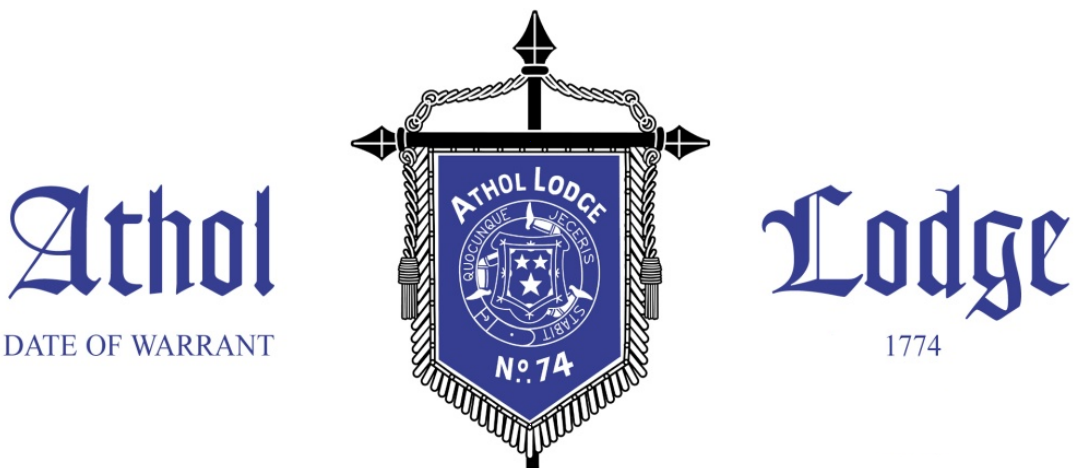History of Athol Lodge No.74
Birmingham & Freemasonry.
We are pleased that you have expressed an interest in becoming a Freemason and, in particular, a member of Athol Masonic Lodge in Birmingham, which was originally founded by members of the 7th Dragoon Guards in 1811. Athol Lodge has a proud history in Freemasonry in the city of Birmingham.
Our lodge is one of the most prestigious and vibrant Freemasons’ lodge in the country with a history which few others can match. The majority of our members live mainly in the midlands area of England, but we have others who currently live and work in London, Leeds, the Home Counties and even France, Germany and China. They come from all walks of life including all trades and businesses, the self-employed, academia, students and the retired members who utilise their invaluable business and life skills to keep Athol Lodge so vibrant and progressive, whilst at the same time retaining our ancient traditions.
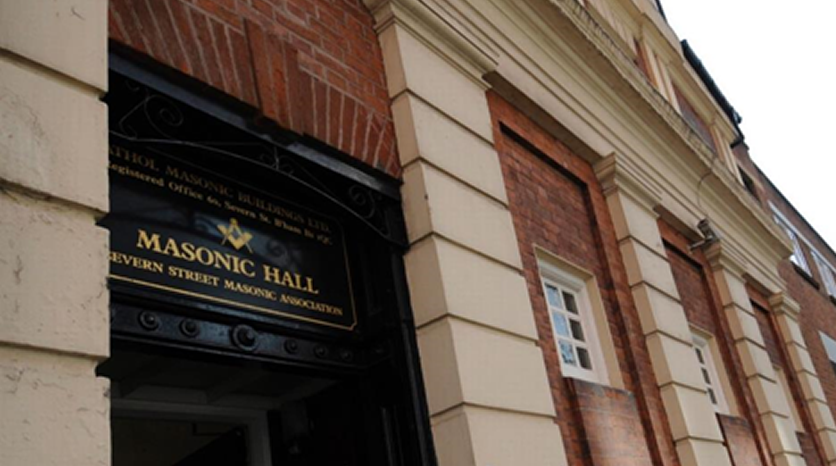
Our modern history in recent times from 2018 was being accepted as a member of the United Grand Lodge of England (UGLE). Universities Scheme. Athol Lodge No.74 is also a member of The Association of Medical, University and Legal Lodges (AMULL) which has worldwide links.
Athol Lodge is also a member of the Association of Atholl Lodges, a prestigious group of lodges with a proud history tracing its origins to the birth of freemasonry in this country. There are 122 still working Athol lodges; 107 in England, 5 in the Channel Islands, two each in Wales, Gibraltar, Bermuda and Jamaica, and one each in Barbados and Guyana. Athol lodges were once described as a necklace of sparkling diamonds stretching around the world. Happily, many of those diamonds are still in place today and they have lost none of their lustre.
We, at Athol Lodge, believe that with our prestigious history, our vibrancy, transparency, commitment to charity and our engagement with all sections of society, our lodge will progress with many new members joining us to celebrate the ideals of freemasonry and the camaraderie we enjoy in this country.
Athol Lodge No.74 meets at Severn Street Masonic Hall, which is a Grade 2 listed building in the city centre of Birmingham, next to The Mailbox. We meet eight times a year on the first Wednesday of January, February, April, May, October, November and December
At the January Lodge Meeting we celebrate the Installation of the new Master of the Lodge and then dine in style in our own dining room, which we call the “Festive Board”. At our December meeting our tradition is to hold a short business meeting and then join our partners, families and friends at dinner at our annual “Carols Evening”.
Now that our history and aspirations of Athol Lodge No74 have been explained, there are various steps you must take before you finally decide to join us. However, please do understand that if you do choose to join and all preliminary steps, outlined later in this masonic website, have been successfully completed you will be welcomed into our lodge with open arms. It is very important that you read this carefully and that you thoroughly understand the nature of Freemasonry, what you can expect from being a Freemason and what Freemasonry has a right to expect from you.
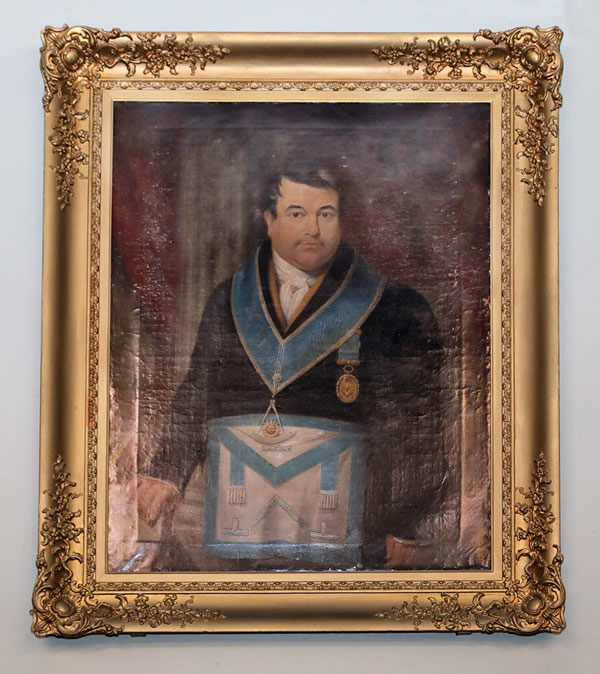
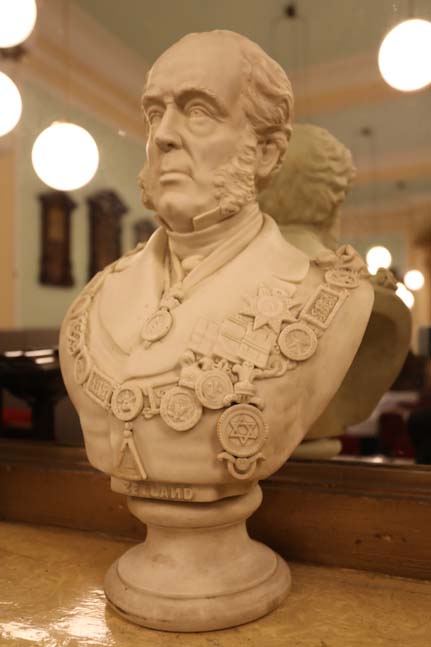
One of Birmingham's hidden gems - Athol Masonic Lodge.
Severn Street Masonic Hall, 60 Severn Street, Birmingham B1 1QG.
Athol Lodge No.74, together with an explanation of the lodge room and some of its treasures and artefacts
courtesy of W.Bro. Mike Betts, one of our former Senior Past Masters.
Welcome to the Severn Street Masonic Hall.
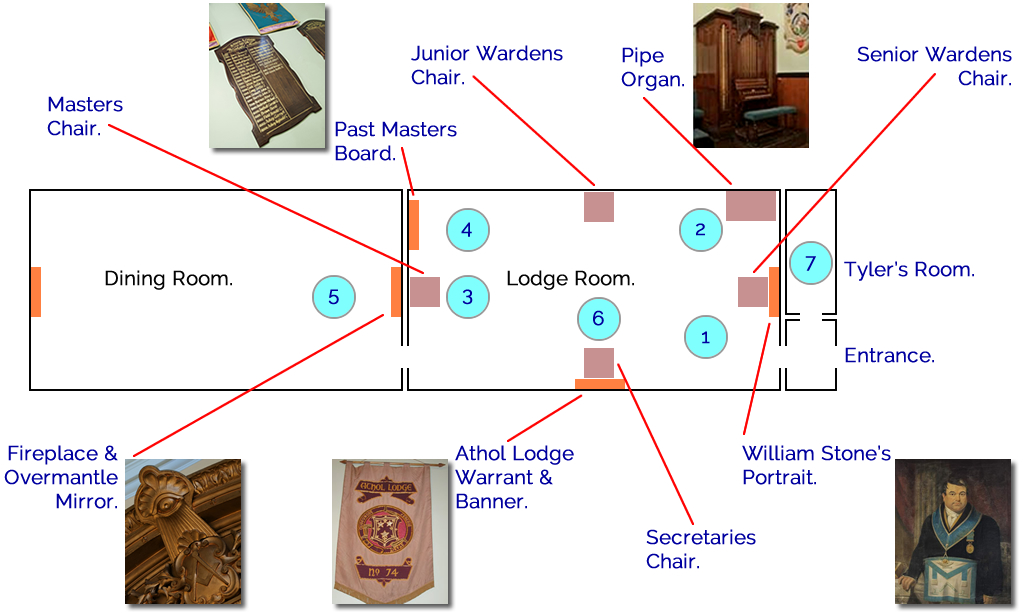
1. Severn Street Masonic Hall.

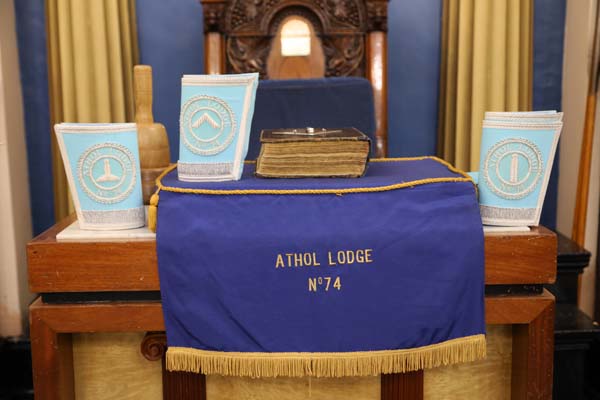
Welcome to the Severn Street Masonic Hall.
Severn Street Masonic Hall is a Grade 2 listed building. It is a very important part of the architectural heritage of the city of Birmingham. Severn Street was originally in an area called the Froggery. A poorly drained, marshy area that had been part of Birmingham from Medieval times.
In the 18th and 19th century it was a poor, slum area populated by thieves, crooks and prostitutes living in tenement blocks. The peaky blinders were also based nearby in Small Heath in the late 19th century – there
was an infamous murder of a policeman by the peaky blinders in front of the Mailbox.
In 1809 the small Hebrew community built a synagogue here at Severn Street, which was the second permanent synagogue built in the city.
It was preceded by a synagogue in Hurst Street which was opened in 1791. Prior to that, services had been held in peoples’ homes and rented halls. Originally it consisted of the entrance rooms and this room only.
In 1813 the synagogue was badly damaged in anti-Semitic riots.
It was rebuilt in 1827 by Richard Tutin and continued to be used as a Synagogue until 1857, when the Singers Hill Synagogue was
built around the corner. This building was then sold to the members of
“Athol Lodge” and opened as a Masonic Hall in 1858.
It is the first and oldest Masonic Meeting Place in Birmingham in the Masonic Province of Warwickshire.
After the founding of the Jewish “Lodge of Israel” in 1874 the two Lodges shared the building. In 1891 the frontage to Severn Street was
redesigned, remodelled and added to by Essex and Nicol Architects from Birmingham and remains little altered today.
2. Athol Original Pipe Organ.
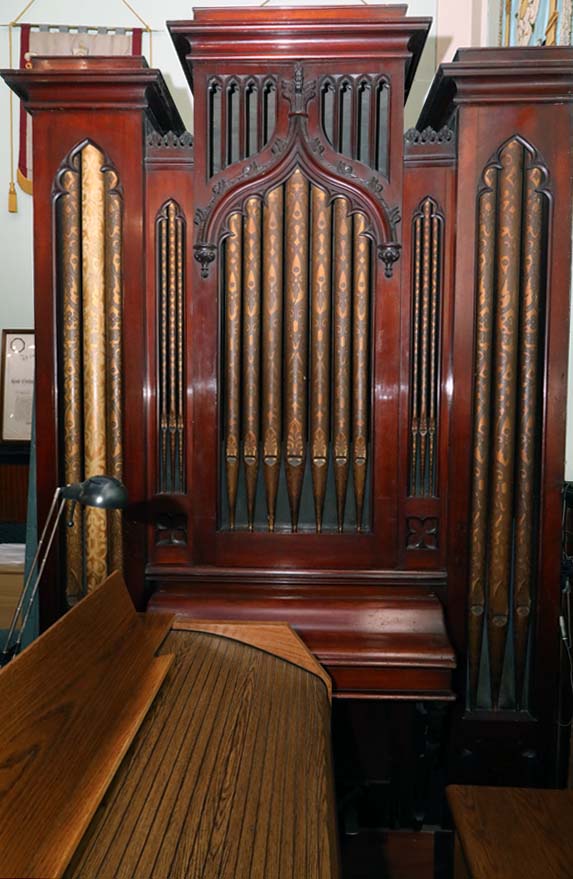
Here is the original pipe organ installed in the synagogue.
Musical instruments were banned from all Jewish religious services by the Rabbis after the destruction of the second Temple in 70AD. All music in synagogue religious services is unaccompanied except for the Marriage Service. If the organ was used, it would have been used for this service. It is believed that Felix Mendelssohn played this organ.
He visited England 10 times with at least 2 visits to Birmingham. He stayed with Joseph Moore, a rich benefactor at the Crescent, Birmingham – now the site of Centenary Square.
In 1808 Moore had founded the Birmingham Oratorio Choral Society who performed musical festivals every 3 years. In order to provide the town with a building sufficiently large to do justice to the festivals, Moore successfully campaigned for the building of the Town Hall (1832-4).
A public subscription was raised to pay for an organ in the town hall.
At the festival of 1834 both hall and organ were used for the first time.
To enhance the fame of the festivals, Moore went to Berlin and persuaded Felix Mendelssohn to compose ‘St. Paul’ which was performed at the festival of 1837 and then ‘Elijah’ performed in 1846. However, Mendelssohn found the organ in the town hall difficult to play.
As a member of the Jewish faith and, it is believed, a Freemason, Mendelssohn would have visited the synagogue.
It is believed he used this organ to rehearse for the concerts.
3. Worshipful Masters Chair.
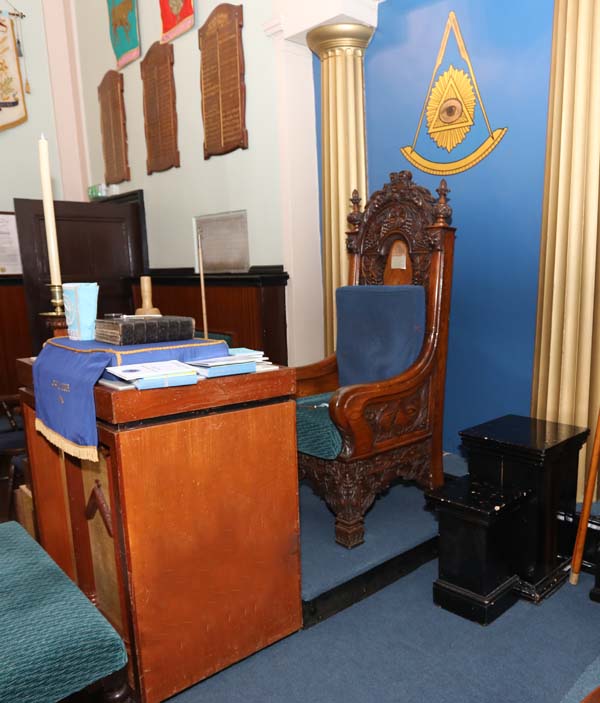
The platform, originally for the Ark of the Covenant now houses the carved oak Worshipful Master’s chair where the head of the Lodge sits during Masonic ceremonies.
This is also the “King’s Chair” which was sat upon by Edward VII when he was still Prince of Wales. He later ascended to the throne in 1901 after the death of his mother Queen Victoria.
The Chair bears two inscription plates; the second says: “This Chair was lent to the Birmingham and Midland Counties Agricultural
Exhibition Society for the use of His Royal Highness the Prince of Wales KG, Most Worshipful Grand Master, on the occasion of his visit to the Exhibition held at Bingley Hall on November 28, 1885“.
The Worshipful Master’s Chair is one of a suite of three carved oak chairs with the Junior and Senior Wardens Chairs.
The fluted Greek Doric columns with pilaster responds to either side of the Worshipful Masters chair were added by the Masons.
4. Athol Masonic Lodge 1811

In 1811 the Army was brought in to quell the disturbances caused by the “Hunger Riots” in Birmingham. This was an extremely unsettled time in British history with wars against Napoleon which resulted in lack of food and
social unrest. The 7th Dragoon Guards were stationed at the
Barracks in Great Brook Street by St Paul’s Church.
Freemasons in the regiment were members of a Military Lodge which had been formed in 1758. During their stay in Birmingham the members
of this lodge initiated at least six Birmingham citizens into Freemasonry.
They were joined by three others in applying to form a new Lodge; this was approved on 16th July 1811.
The first meeting of the lodge took place on 24th July 1811.
A masonic lodge is led by the Worshipful Master and is supported by a Senior and Junior Warden. Three of the original members were appointed
to lead the Lodge – John Thomas as Worshipful Master, John Nelson as Senior Warden and Samuel Hudson as Junior Warden.
All of the Masters of Athol Lodge are listed here. Craft Masonry’s calendar commences with the creation of the world and uses the term Anno Lucis (A.L.) – “year of Light.” As the Earth was believed in conventional
theology to have begun in 4000 BC . Therefore the year 2015 becomes 6015.
The first meeting place of Athol Lodge was The Swan public house, Great Brook Street.
In the following year it moved to The Cup, Stafford Street and later met in a number of other taverns. On 29th November 1858 Athol Lodge bought
the Severn Street Synagogue and opened it as it’s Masonic Hall and permanent meeting place.
5. Athol Dining Room.

The Dining Room and ante-rooms were added by Henry Nadan between 1871 and 1874 and built by a local Birmingham builder called Moffat.
The Masons were careful to preserve the historical tradition of the building by adding ‘Maginei David’, Hebrew for Stars of David, affixed to the top of each of the pillars. There are five-sided Masonic stars on the two
ornate fireplaces (five sided to refer to the five points of fellowship).
And, there are magnificent gilt overmantle mirrors.
These allow the whole interior to refer to the two original functions – Synagogue and Masonic Hall. After every meeting Masons use this Dining Room to hold a meal or ‘festive board’. Freemasonry is not a secret society but it is a society with secrets.
The current version of freemasonry was formed in 1717 in London based on ancient stonemasons guilds. The long tradition of Freemasonry reflects the skills and tools of the stonemasons who built Solomon’s Temple.
Currently 36 Lodges meet at Severn Street
18 Craft Lodges, 5 Royal Arch Chapters, 6 Mark Master Lodges, 2 Royal Ark Mariners Lodges, 1 Royal And Select Masters, 1 Order Of The Secret Monitor,
2 Rose Croix Chapters & 1 Lodge Of Instruction.
Jews have always been active and enthusiastic members of the Freemason movement and the Jewish Lodges and Orders that meet at Severn Street are: The Lodge of Israel, The Lodge of Loyalty, Israel Royal Arch Chapter and Charity Mark Master Masons.
6. The Hall & Banners.
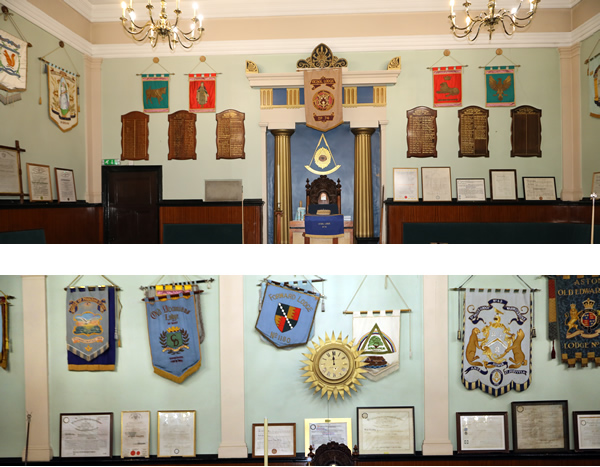
The banners around the room are the emblems of each of the lodges that meet in Severn Street – this one is Athol Lodge’s banner.
The hall is laid out according to masonic tradition with the Master’s chair in the East, the Senior Warden’s chair in the West and the Junior Warden’s chair in the South. The black and white chequerboard floor, common to all Masonic Halls, represents the duality of light and darkness and the joys and sorrows of life.
Masons believe in a supreme being – the Grand Architect of the Universe. The G hanging from the ceiling refers to this being. The ceiling is also decorated to imitate the night sky.
Note the stars generally point to the Earth – made out of a NatWest money box. The first Lodge to meet at Severn Street was named ‘Athol’ after the Grand Master John Murray, 4th Duke of Athol (1755–1830) who had signed the Warrant to form the Lodge – the original is above the Secretaries’ chair.
The first initiate was William Stone who later became Worshipful Master of the Lodge six times between 1825 and 1844. His portrait, presented in 1839, hangs over there behind the Senior Wardens chair in the Lodge Room.
Further Mason Images from Athol Lodge Birmingham.
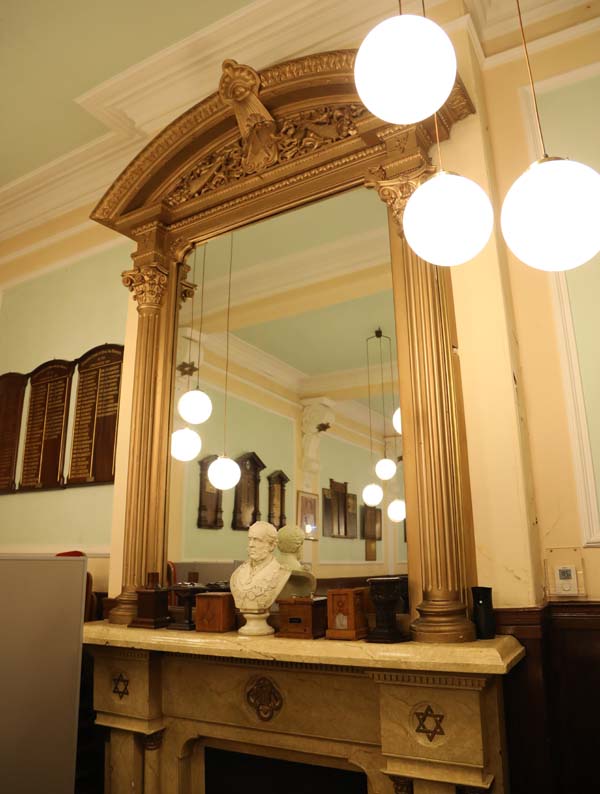

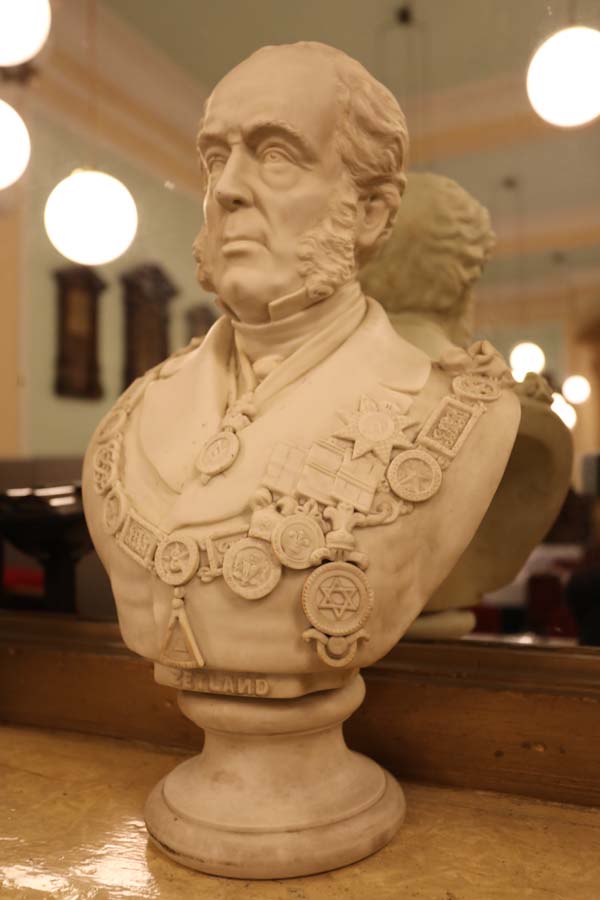
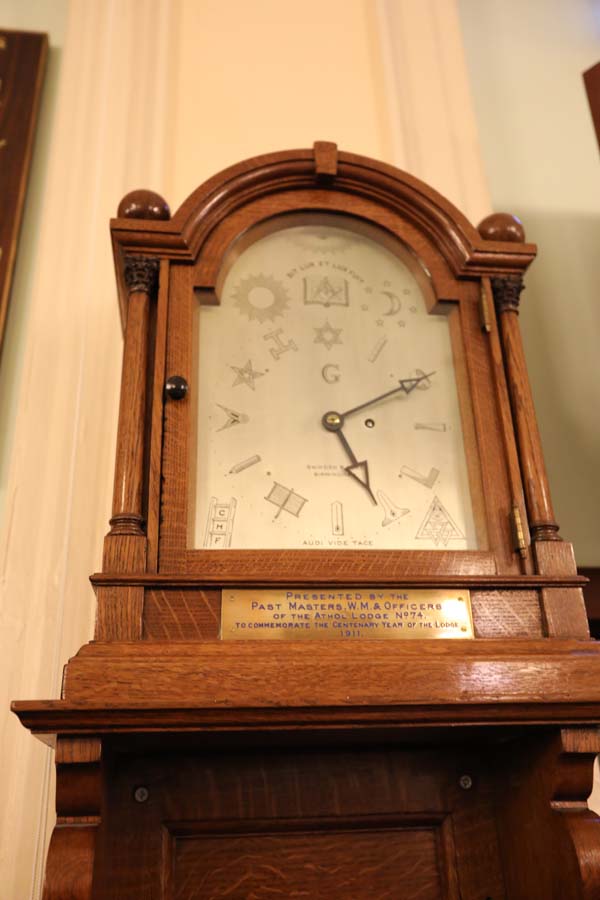

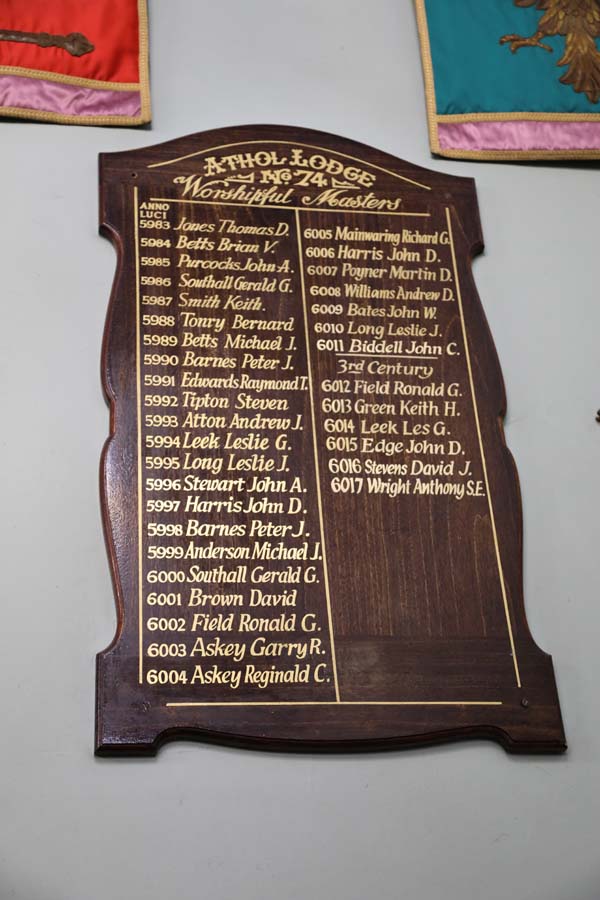
Learn about the 6th Duke of Atholl.
The 6th Duke of Atholl – Chieftain, Grand Master, and a Memorial to Remember.
In 1865, why did over 500 Scottish Freemasons climb a hill in Perthshire carrying working tools, corn, oil and wine? READ MORE….
